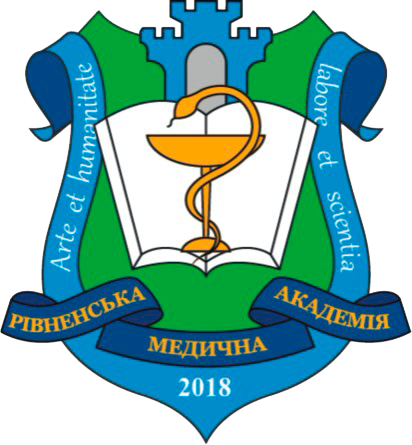RESEARCH OF SOFT DOSAGE FORMS CONTAINING RETINOIDS
DOI:
https://doi.org/10.32782/health-2024.1.20Keywords:
retinoids, adapalene, tretinoin, solubility, soft dosage forms, gel, substances, nanoemulsionsAbstract
Acne is a common skin disease, which is accompanied by a significant skin and psychological burden. Topical therapy is the first choice for the treatment of mild to moderate acne, and in severe cases it can provide additional support to other traditional forms of acne vulgaris treatment. The use of topical retinoids, such as adapalene and tretinoin, can present significant challenges due to their proven instability, low bioavailability and penetration, and potential for skin irritation. The purpose of our work was to study the method of introducing active substances into soft medicinal products (gels) containing adapalene and tretinoine (by the type of emulsion, suspension, solution) and to study the solubility of these active substances. The objects of the study were soft medicines (gels) containing adapalene and tretinoin, both mono- and combined. Determination of optical indicators of soft dosage forms was carried out according to the methodology of the State Pharmacopoeia of Ukraine; in dissolution studies, adapalene and tretinoin substances purchased from the Sigma-Aldrich RTC company (Germany) were used. Based on the results of photomicrography of samples with adapalene and tretinoin, it was concluded that in the soft dosage form the substances are insoluble and are administered as a suspension. At the same time, the presence of insoluble crystals in the composition of the soft dosage form is the main cause of side effects of medicinal and cosmetic products with retinoids. We determined the solubility of adapalene and tretinoin in non-aqueous solvents. According to the obtained data, tretinoin has better solubility in the proposed non-aqueous solvents. Its solubility in polysorbates and tea tree essential oil makes it possible to use these solvents in the preparation of emulsion systems. Adapalene dissolved in dimexide and a mixture of dimexide with tea tree essential oil when heated above 50 oC. Based on the results of the analysis of commercial soft drugs with adapalene and tretinoin, it was determined that these substances were included in the composition as a suspension. The technology for obtaining the presented gels does not involve the use of methods of improving the bioavailability of active substances due to nanoencapsulation. The micronization method (application of microsphere technology) proposed by the manufacturers («Adapalene 3 gel» and «Tretinoin 1 gel») does not significantly reduce the size of the particles of the substance.
References
Cunliffe WJ, Holland DB, Clark SM, Stables GI. Comedogenesis: some aetiological, clinical and therapeutic strategies. Dermatology 2003;206:11–16.
Tarun Garg (2016) Current nanotechnological approaches for an effective delivery of bio-active drug molecules in the treatment of acne, Artificial Cells, Nanomedicine, and Biotechnology, 44:1, 98–105. DOI: 10.3109/21691401.2014.916715.
Rusu A., Tanase C., Pascu G.-A., Todoran N. (2020). Recent advances regarding the therapeutic potential of adapalene. Pharmaceuticals 13, 217. DOI: 10.3390/ph13090217.
Штрімайтіс О.В., Кухтенко О.С., Чуєшов В.І. Маркетинговий аналіз використання лікарських засобів із умістом ретиноїдів при лікуванні акне. Фармацевтичний журнал. 2022. № 6. С. 6–11. DOI: 10.32352/0367-3057.6.22.01.
Canavan, T.N., Chen, E. & Elewski, B.E. Optimizing Non-Antibiotic Treatments for Patients with Acne: A Review. Dermatol Ther (Heidelb) 6, 555–578 (2016). https://doi.org/10.1007/s13555-016-0138-1.
Culp L, Moradi Tuchayi S, Alinia H, Feldman SR. Tolerability of Topical Retinoids: Are There Clinically Meaningful Differences Among Topical Retinoids? J Cutan Med Surg. 2015 Nov-Dec;19(6):530–8. DOI: 10.1177/1203475415591117. Epub 2015 Jun 18. PMID: 26088502.
Bhatia G, Zhou Y, Banga AK. Adapalene microemulsion for transfollicular drug delivery. Pharm Sci 2013; 102:2622–31.
Lauterbach A, Mueller-Goymann CC. Development, formulation, and characterization of an adapalene-loaded solid lipid microparticle dispersion for follicular penetration. Int J Pharm 2014;466:122–32.
Jain AK, Jain A, Garg NK, et al. Adapalene loaded solid lipid nanoparticles gel: an effective approach for acne treatment. Colloids Surf B Biointerf 2014;121:222–9.
Guo C, Khengar RH, Sun M, et al. Acid-responsive polymeric nanocarriers for topical adapalene delivery. Pharm Res 2014;31:3051–9.
Державна фармакопея України : у 3-х т. / Державне підприємство «Український науковий фармакопейний центр якості лікарських засобів». 2-е вид. Харків : Український науковий фармакопейний центр якості лікарських засобів, 2015. Т. 1. 1128 с.
Промислова технологія лікарських засобів : підручник / Є.В. Гладух та ін. Харків : Новий світ 2000, 2018. 525 с.
Штрімайтіс О.В., Кухтенко О.С., Чуєшов В.І. Вимоги провідних фармакопей до адапалену та третиноїну. Health & Education. 2023. Вип. 4. C. 178–186. doi.org/10.32782/health-2023.4.25.
Muller R.H., Radtke M., Wissing S.A. Solid lipid nanoparticles (SLN) and nanostructured lipid carriers (NLC) in cosmetic and dermatological preparations. Adv. Drug Deliv. Rev. 2002;54:S131–S155. DOI: 10.1016/S0169-409X(02)00118-7.
Piazzini V., Monteforte E., Luceri C., Bigagli E., Bilia A.R., Bergonzi M.C. Nanoemulsion for improving solubility and permeability of Vitexagnus-castus extract: Formulation and in vitro evaluation using PAMPA and Caco-2 approaches. Drug Deliv. 2017;24:380–390. DOI: 10.1080/10717544.2016.1256002.
Jenning V., Gohla S.H. Encapsulation of retinoids in solid lipid nanoparticles (SLN) J. Microencapsul. 2001;18:149–158.
Agrawal Y., Petkar K.C., Sawant K.K. Development, evaluation and clinical studies of Acitretin loaded nanostructured lipid carriers for topical treatment of psoriasis. Int. J. Pharm. 2010;401:93–102. DOI: 10.1016/j.ijpharm.2010.09.007.
Ridolfi D.M., Marcato P.D., Justo G.Z., Cordi L., Machado D., Duran N. Chitosan-solid lipid nanoparticles as carriers for topical delivery of tretinoin. Colloids Surf. B Biointerfaces. 2012;93:36–40. DOI: 10.1016/j.colsurfb.2011.11.051.
Moghimipour E., Salimi A., Leis F. Preparation and evaluation of tretinoin microemulsion based on pseudo-ternary phase diagram. Adv. Pharm. Bull. 2012;2:141–147.
Morales J.O., Valdes K., Morales J., Oyarzun-Ampuero F. Lipid nanoparticles for the topical delivery of retinoids and derivatives. Nanomedicine. 2015;10:253–269. DOI: 10.2217/nnm.14.159.
The United States Pharmacopoeia. 44th ed. NF 39, 2021.
European Pharmacopoeia. 10th ed. Strasbourg: Council of Europe, 2019. 4370 p.
The British Pharmacopeia.14th ed. London: The Stationery Office, V. 1–2020. 1398 p.
The British Pharmacopeia.14th ed. London: The Stationery Office, V. 2–2020. 1334 p.





